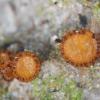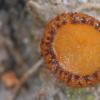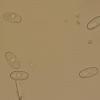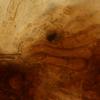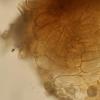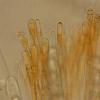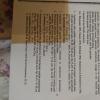
21-12-2025 09:32
Hello.A tiny ascomycete found embedded in wood in

21-12-2025 21:32
Pol DebaenstHello, Garden, Burgweg 19, Veurne, BelgiumOn 10/1

22-12-2025 23:38
Patrice TANCHAUDBonsoir, récolte sur un mur en pierre, apothéci

22-12-2025 00:47
Patrice TANCHAUDBonsoir, récolte à proximité du milieu dunaire

21-12-2025 21:40
Isabelle CharissouBonjour, j'aimerais connaitre les références de

20-12-2025 23:08
Patrice TANCHAUDBonsoir, récolte sur sol sablonneux dans l'arri�

20-12-2025 15:47
Mirek GrycHi.These grew on pine wood that was heavily covere
Anthracobia
Zuzana Sochorová (Egertová),
07-10-2020 13:36
 Hello,
Hello,I have here a collection of Anthracobia from a fireplace in South Bohemia, the Czech Republic. I think it is A. tristis (the shape of spores seems to be enough cylindrical to me), but I almost don´t collect this genus, so I prefer to consult the determination.
Ascospores measure (15.4) 16.5-18.4 (18.7) x (7.9) 8-8.7 micrometers, Q = (1.8) 1.9-2.2 (2.3).
Hairs are brown, in fascicles, it wasn´t possible to observe them individually. The apical cell is up to 46 micrometers long and 10-17 micrometers wide.
Zuzana
Mirek Gryc,
07-10-2020 14:10
Re : Anthracobia
Hi Zuzana
As far as I know, only this species is said to have cylindrical spores.
Could you please check if the paraphyses content changes color in Lugol?
http://grzyby-pk.pl/gat_a/imgduze/anthracobia_tristis15.jpg
Mirek
As far as I know, only this species is said to have cylindrical spores.
Could you please check if the paraphyses content changes color in Lugol?
http://grzyby-pk.pl/gat_a/imgduze/anthracobia_tristis15.jpg
Mirek
Zuzana Sochorová (Egertová),
07-10-2020 18:25

Re : Anthracobia
Hi Mirek,
thank you. The collection is already dry, but I can test the reaction later (although I think it doesn´t help in distinguishing the species too much, as it´s normal that carotenoid pigment turn green).
Z.
thank you. The collection is already dry, but I can test the reaction later (although I think it doesn´t help in distinguishing the species too much, as it´s normal that carotenoid pigment turn green).
Z.
Lothar Krieglsteiner,
07-10-2020 20:16

Re : Anthracobia
Hi Mirek,
doesn`t IKI change the color in all orange operculates? (carotenoids changing from orange to greenish). I thought I once read this, but at the moment I do not find it.
Best, Lothar
doesn`t IKI change the color in all orange operculates? (carotenoids changing from orange to greenish). I thought I once read this, but at the moment I do not find it.
Best, Lothar
Mirek Gryc,
08-10-2020 08:51
Re : Anthracobia
Hi to all
Until this year, I thought similarly, but now I have some doubts. I thought this reaction had escaped my attention. Previously, I only noticed it in A. tristis and I was not sure if it occurs in other species. This year I found other collections, including:
- A. melaloma; http://www.grzyby-pk.pl/gat_a/gat_anthracobia_melaloma.php
- A. nitida: http://www.grzyby-pk.pl/gat_a/gat_anthracobia_nitida.php
In these collections such a reaction did not occur, and therefore, out of curiosity, I asked for such a test with Zuzana fruiting bodies.
It is important that I tested in Lugol, maybe it is different in IKI ???
I don't have IKI at the moment so I haven't checked it!
greetings
Mirek
Until this year, I thought similarly, but now I have some doubts. I thought this reaction had escaped my attention. Previously, I only noticed it in A. tristis and I was not sure if it occurs in other species. This year I found other collections, including:
- A. melaloma; http://www.grzyby-pk.pl/gat_a/gat_anthracobia_melaloma.php
- A. nitida: http://www.grzyby-pk.pl/gat_a/gat_anthracobia_nitida.php
In these collections such a reaction did not occur, and therefore, out of curiosity, I asked for such a test with Zuzana fruiting bodies.
It is important that I tested in Lugol, maybe it is different in IKI ???
I don't have IKI at the moment so I haven't checked it!
greetings
Mirek
Lothar Krieglsteiner,
09-10-2020 03:05

Re : Anthracobia
Hello Mirek,
IKI is Lugol (or Baral) - it maybe different in Melzer (with chloral hydrate added, which is letal). I thought it would not make a difference here (?).
Best, Lothar
IKI is Lugol (or Baral) - it maybe different in Melzer (with chloral hydrate added, which is letal). I thought it would not make a difference here (?).
Best, Lothar
Mirek Gryc,
09-10-2020 09:07
Re : Anthracobia
Hi Lothar.
Man learns all his life and still makes mistakes, but thanks to kind people he gets out of error faster :)
I also thought that the reaction of the paraphyses content was a common feature for this kind, but as you can see, there are collections that are not affected by this. I don't know if I will meet any Anhracobia this year, but I will definitely be checking if this reaction occurs in other species.
greetings
Mirek
Man learns all his life and still makes mistakes, but thanks to kind people he gets out of error faster :)
I also thought that the reaction of the paraphyses content was a common feature for this kind, but as you can see, there are collections that are not affected by this. I don't know if I will meet any Anhracobia this year, but I will definitely be checking if this reaction occurs in other species.
greetings
Mirek
Lothar Krieglsteiner,
09-10-2020 10:13

Re : Anthracobia
Hello Mirek,
"I don't know if I will meet any Anhracobia this year, but I will definitely be checking if this reaction occurs in other species."
So will I :-)
"Man learns all his life and still makes mistakes, but thanks to kind people he gets out of error faster :)"
The same is correct for me ...
Best regards, Lothar
"I don't know if I will meet any Anhracobia this year, but I will definitely be checking if this reaction occurs in other species."
So will I :-)
"Man learns all his life and still makes mistakes, but thanks to kind people he gets out of error faster :)"
The same is correct for me ...
Best regards, Lothar
Zuzana Sochorová (Egertová),
09-10-2020 18:50
Viktorie Halasu,
09-10-2020 21:56

Re : Anthracobia
Hello all,
to add to the chaos: Larsen in his thesis about Anthracobia writes "paraphyses ... filled with small orange granules which turn green in iodine" at all species: macrocystis, melaloma (=intermixta, =maurilabra), nitida, tristis (=muelleri). Even A. subatra has "paraphyses ... brown-walled, turning green in iodine" (without mentioning any VBs).
I would be interested in two things in this genus: Is there difference in iodine reaction between yellow carotenoids and those dark orange to red? Is the presence of yellow vs. red carotenoids a constant character of a species? Alas I have too little experience with the genus to know the answers.
Viktorie
to add to the chaos: Larsen in his thesis about Anthracobia writes "paraphyses ... filled with small orange granules which turn green in iodine" at all species: macrocystis, melaloma (=intermixta, =maurilabra), nitida, tristis (=muelleri). Even A. subatra has "paraphyses ... brown-walled, turning green in iodine" (without mentioning any VBs).
I would be interested in two things in this genus: Is there difference in iodine reaction between yellow carotenoids and those dark orange to red? Is the presence of yellow vs. red carotenoids a constant character of a species? Alas I have too little experience with the genus to know the answers.
Viktorie

